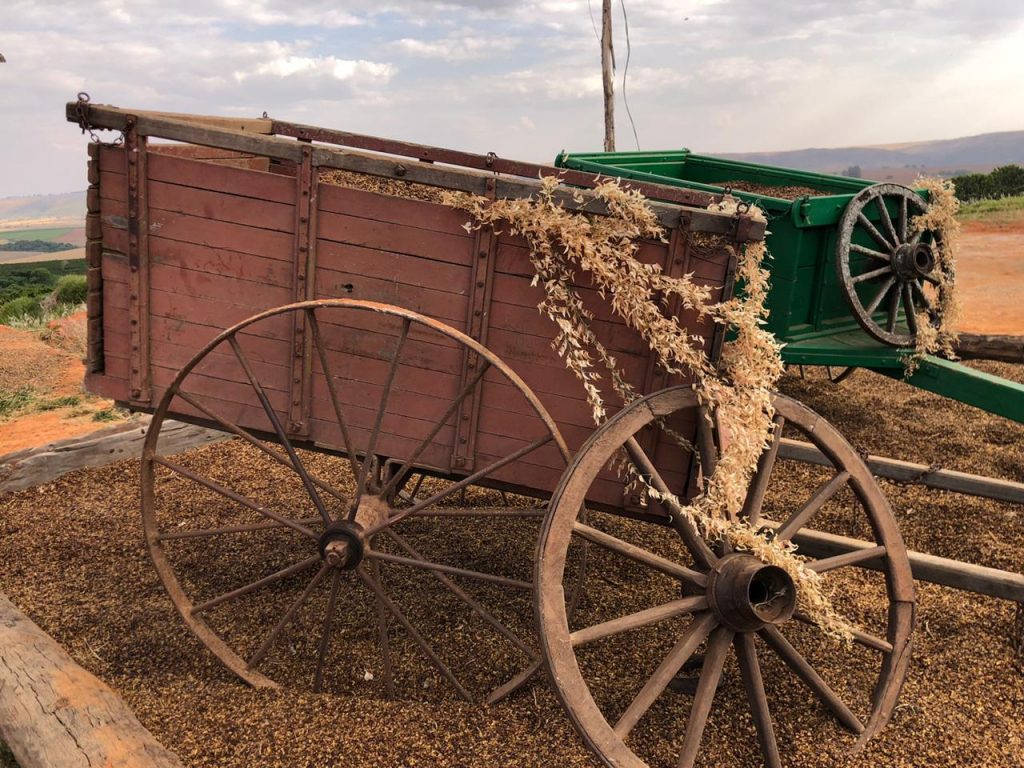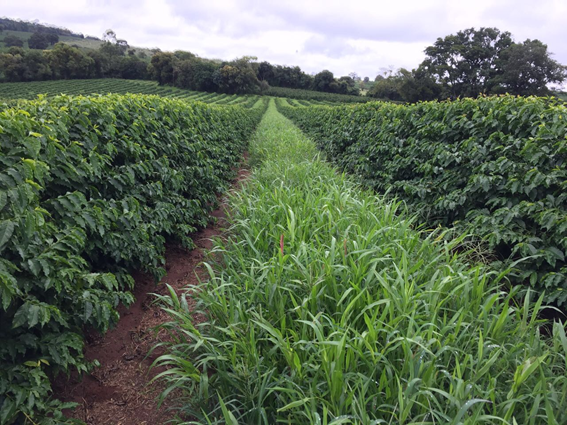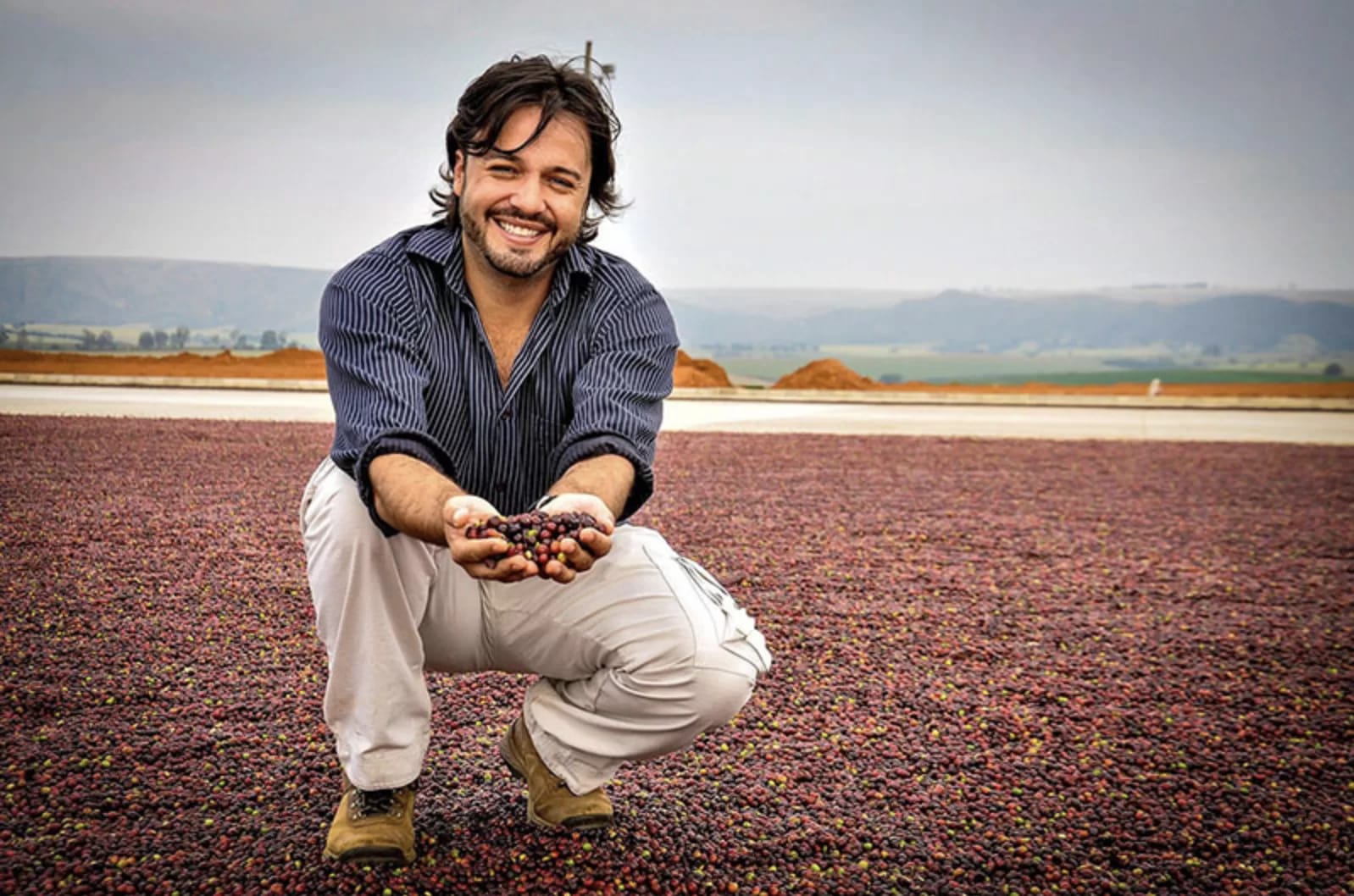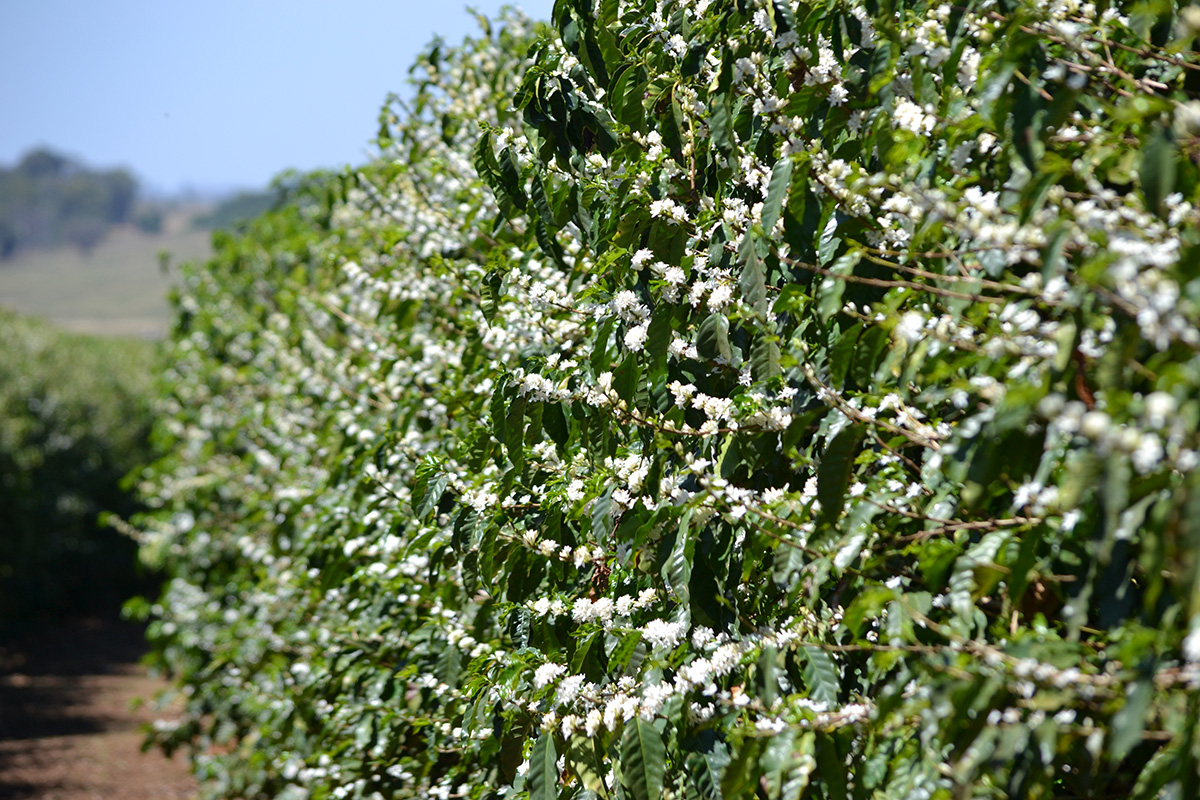An exclusive interview with Tiago Castro Alves from Barinas Farm
The Castro Alves family history began in the 19th century in the Araxá region, in Minas Gerais and has blended both faith and mysticism for seven generations. Founded in 1950, Barinas farm is one of the pioneering coffee plantations of the region, today under the command of Tiago C. Alves. The name Barinas means “where the wind blows the strongest” and was given in honour of the Araxas Indians.
We have purchased two lots of the Yellow Bourbon crop 2020/21 from Mr Tiago Castro in February, way before the harvest had started. That’s why we know that the coffee beans have been produced with special care. We are more than happy with the results of the cupping test that proved the high quality and amazing taste of the Barinas coffee.
In this exclusive interview with Unroasted, Tiago shares the secret of becoming a model family in the Brazilian coffee specialty business, highly known for their diversification and professionalism that prove themselves in the excellence of coffee they produce.
Unroasted: You come from the seventh generation of coffee growers. Do you feel a connection with past Araxán generations? Do you think it influences the way you produce coffee today?

The ox-cart belonged to Tiago’s great-great-grandmother
Tiago Castro Alves: We have a strong connection with the first residents of the region. At the Castro Alves, we respect and thank those who discovered this diversified terroir. All of their accomplishments and mistakes have led to the transformation of our present. We have an ox-cart of our tetra Avó – great-great-grandmother – which arrived with her at the farm. Today, it is placed at the entrance of the farm so that we remember how difficult it was to become who we are today.
U: Do you hold onto any traditions to honour the past?
TCA: Yes, we celebrate and give thanks to the harvest by gathering in a circle and singing indigenous songs the way the Araxás tribe did before us.
U: Have you noticed any differences between the past and modern coffee production techniques?
TCA: In the past, farmers used to focus on subsistence agriculture that did not require them to even think about salesmanship or transportation. Nowadays, we get a chance to export the goods, sell and deliver our coffee internationally, farming has become a business. Modern growers now use mechanised harvesting technologies, using machines, not only manual harvesting, which is used mostly on the plots with the best historical potential. Farmers also removed the animal traction and try to make a change by improving the social, environmental and technological standards in Brazilian agriculture.
U: When did you start producing coffee? Please tell us a little about your beginning. How different is your mentality now compared to where you started?
TCA: I started in 2002, I first came to accompany the harvest, there was no concern with the cup or delivery quality. Today, after almost 20 years, we plan and identify each plot using a computerized MID (Integrated Pest and Disease Management). Every farm plot is mapped with information about the soil, productivity, quality and condition.
U: There are many important factors that affect the production of specialty coffee, which ones are the most important to you?
TCA: The production of specialty coffee includes the terroir selection, harvest, post-harvest and improvements, and processing. Firstly, we need to choose the right terroir area and the variety that will be planted there. The planting location is determined by the quality of coffee and the sustainability of its cultivation, including light, soil etc.
After selecting the variety, we need to produce the seedlings by picking the healthy and fertile crop fruit through a strictly controlled practice. We only pick physiologically mature cherries that are fully ready for harvesting as this process has a direct influence on the type of coffee that will be produced from it. After sowing the seeds we need to wait around 1,5 year for the first flowering of the coffee tree.
We tend to use the selective harvesting technique which guarantees the highest quality of our specialty coffee beans.
After collecting our perfectly mature cherries, we need to move on to the post-harvest process. The coffee needs to reach a correct humidity level before going through milling. In order to do so, we can choose the dry or the wet method. The coffee rests on a concrete patio or a suspended bed. As for the method that uses the concrete patio, the coffee is spread in layers and must be constantly turned over to maintain the uniformity and avoid undesirable fermentation. Dried coffee should have a humidity level that fits between 11% and 12%.
At last, we need to make sure our coffee is clean from any potential impurities such as stones, branches etc. The beans are being cleaned with sieves and then moved to the cleaning and peeling stage. Before storing the beans, we make sure they are tested and classified according to their quality levels.
U: You are considered “a model” in the coffee industry. What do you think is the reason for that?
TCA: We are a model of quality as 80% of the coffee we produce on the property is specialty coffee. For 3 years we have been doing tests with anaerobic fermentation and with yeasts which started showing results.

An example of Brachiaria grass used by growers.
U: Apparently, you are a Brachiaria fan in your plantations. How does Brachiaria work? What is the science behind it? Have you noticed any productivity or quality changes after implementing it?
TCA: Brachiaria produces a large amount of slow decomposing plant mass, consequently forming a lot of organic matter. It also has a deep and dense root system favouring structure, drainage, and reducing soil compaction. Another benefit is that the soil nematodes do not develop in the Brachiaria roots which serve as a “natural nematicide”.
The coffee roots are concentrated in the area below and around the projection of its canopy. Therefore, this area should be kept free of weeds in order not to cause competition for nutrients, water and light.
The advantages of the technique are countless:
– It inhibits the germination and growth of weeds in the coffee line.
– It increases the organic matter content in the soil. The organic matter improves the physical (drainage, soil structure, porosity, etc.), chemical (fertility, availability and retention of nutrients), biological (beneficial interactions between the “micro life”) soil and will serve as a slow-release fertilizer.
– Soil temperature decreases. On a hot day, exposed soil reaches up to 75ºC. The soil covered with haystack reaches around 45ºC on the hot days saving the “radicella” (small roots responsible for the absorption of nutrients) that cannot survive in more than 65ºC temperature.
– It reduces soil loss caused by erosion.
– More water is stored in the soil because evaporation is reduced.
– It promotes the recycling of nutrients in the soil.
U: Could you tell us more about the training you provide to your employees?
TCA: The farm has an annual training and recycling plan. We provide training about professionalising the operation of machinery and equipment, instructions on health and safety at work, including emergency, firefighting, use and conservation of EPIs, risk control, personal hygiene, hypertension etc. Apart from that we also focus on agronomic and environmental courses like monitoring pests and diseases, product quality, conservation practices, soil fertility, solid and liquid waste management and preservation of fauna and flora. In our annual schedule, we also find time for social training involving social code of conduct, labour rights, importance certification and administration.
U: Are you concerned about climate change? Have you felt any drastic change in the climate since you started in 1998? Does climate change influence your decisions while you manage your farms?
TCA: Yes, the change is noticeable and the farm has been analysing climate data with productivity effects and making adaptation plans mainly focused on efficient use of inputs. We also had to reduce the use of natural resources, preservation areas, watercourses and others.
U: Could you tell us more about your social work in the rehabilitation centres for former chemical dependents? That sounds very interesting.
TCA: The certification group has a partnership with a clinic of chemical dependents that uses the confection of native seedlings as therapy in the recovery. The farms of the group, including the Barinas farm, plant the seedlings in the regeneration areas which leads to increasing of the vegetation. The group’s farms are committed to providing coffee to be used by chemical dependents throughout the year. We have an average of 150 people that pass through the farm annually.
U: Thank you so much for this interview, we learned a lot and we cannot wait to receive your coffee crop in October!
If you’re interested in trying one of the Tiago’s coffee lots or would like to learn more about the cupping profile and the farm info – follow the links to: Natural Yellow Bourbon and Pulped Natural Yellow Bourbon!


